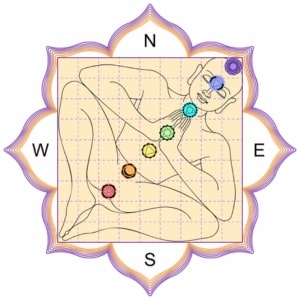Basic Principles and Concepts of Vastu Shastra
Vastu Shastra is a traditional Indian system of architecture and design that is based on ancient texts and teachings. It involves the use of specific principles and concepts to create harmonious living and working spaces. Here are some basic principles and concepts of Vastu Shastra:
- Panchabhutas: According to Vastu Shastra, everything in the universe is made up of five elements – earth, water, fire, air, and space. These elements are believed to have a significant impact on the design and layout of a building.
- Vastu Purusha: Vastu Purusha is the personification of the energy of a building. It is believed that every building has a Vastu Purusha, and its placement is essential to ensure that the energy flows smoothly.
- Directions: Vastu Shastra places great emphasis on the orientation and placement of a building in relation to the cardinal directions. Each direction is associated with specific elements and energies that must be taken into account when designing a building.
- Balance and symmetry: Balance and symmetry are essential principles of Vastu Shastra. The layout and design of a building should be symmetrical and balanced to promote harmony and positive energy.
- Vastu remedies: Vastu Shastra also provides remedies to correct any imbalances or negative energies in a building. These remedies may involve the use of specific colors, materials, or symbols to create a more harmonious environment.
- Entrance: The entrance of a building is considered to be one of the most critical elements of Vastu Shastra. It should be positioned in a particular direction and should be welcoming and well-lit to invite positive energy.
- Rooms and their placement: The placement of rooms within a building is also crucial in Vastu Shastra. Each room is associated with specific energies and must be positioned in a way that promotes balance and harmony.
Vastu Shastra is a complex system that involves many principles and concepts. Its goal is to create living and working spaces that promote health, happiness, and prosperity by aligning them with the forces of nature.

History of Vastu Shastra
The history of Vastu Shastra dates back to ancient India. It is believed that the principles and concepts of Vastu Shastra were first recorded in the Rig Veda, one of the oldest sacred texts of Hinduism, which is believed to have been written around 5000 years ago.
Vastu Shastra is also mentioned in other ancient texts such as the Atharva Veda, the Ramayana, and the Mahabharata. These texts describe the use of Vastu Shastra in the construction of temples, palaces, and other buildings.
The first known treatise on Vastu Shastra is the Brihat Samhita, written by the Indian astronomer Varahamihira in the 6th century CE. This text describes the principles of Vastu Shastra and its use in the construction of buildings.
Over the centuries, Vastu Shastra continued to evolve, with new texts and treatises being written. It also spread to other parts of the world, with its influence seen in the architecture of Southeast Asia, China, and Japan.
In the modern era, Vastu Shastra has gained renewed interest in India and other parts of the world. Many people believe that following the principles of Vastu Shastra can bring harmony and prosperity to their homes and workplaces.

Vastu Compass
Vastu compass is a tool used in Vastu Shastra to determine the orientation and alignment of a building or structure with respect to the cardinal directions. It is a type of compass that is designed to be used specifically for Vastu Shastra and is different from a regular compass that is used for navigation.
The Vastu compass is typically made of brass or copper and is shaped like a disc. It has markings for the eight directions, including the four cardinal directions (north, south, east, and west) and the four intermediate directions (northeast, southeast, southwest, and northwest). The compass is used by placing it in the center of the plot or building and aligning it with the north direction. This helps in determining the correct orientation and placement of rooms, doors, windows, and other elements of the building according to Vastu Shastra principles.
In addition to the Vastu compass, there are also other tools and techniques used in Vastu Shastra, such as the Vastu Purush grid and the Vastu pyramid. These tools are believed to help enhance positive energies in the living or working space and eliminate negative energies.

Vastu Purush
Vastu Purush is a mythical being that represents the energy and spirit of a plot of land or a building according to Vastu Shastra. According to ancient Indian mythology, it is believed that Vastu Purush lies with his head in the northeast direction and his body spread over the entire plot of land or building. It is said that if Vastu Purush is not appeased, he may cause obstacles and negative energies in the living or working space.
To appease Vastu Purush, certain rituals are followed during the construction of a building or the preparation of a plot of land. These rituals involve chanting of mantras and offerings of certain materials such as rice, grains, and flowers. The orientation of the building and the placement of rooms, doors, and windows are also done in a way that is believed to appease Vastu Purush and attract positive energies.

Vastu Shastra for Home
According to Vastu Shastra, the design and layout of a house can have a significant impact on the well-being and happiness of its inhabitants. Therefore, Vastu Shastra offers a set of guidelines for designing and constructing homes that promote positive energy flow and balance. By following the principles of Vastu Shastra, homeowners can enhance the quality of their living spaces and promote a sense of well-being and prosperity. Here are some Vastu Shastra tips for a home:
- Layout: The layout of a home should be square or rectangular in shape, with the four corners aligned with the four cardinal directions. Avoid irregularly shaped houses or houses with cuts or extensions.
- Orientation: The main entrance of the house should face east, north, or northeast direction for good energy flow. Avoid having a main entrance facing the south, southwest, or west directions.
- Rooms: Different rooms in a house should be placed in specific directions to ensure good energy flow. For example, the master bedroom should be located in the southwest direction of the house, while the living room should be located in the northeast, east, or north direction of the house.
- Doors: Doors should be placed in a way that allows for the free flow of energy. The main door should be larger than other doors and should be located in the north, east, or northeast direction of the house.
- Windows: Windows should be placed in the east, north, or northeast direction to allow for natural light and ventilation. Avoid having windows in the south or west direction.
- Furniture: The placement of furniture is also important in Vastu Shastra. The living room furniture should be arranged in a way that promotes conversation and socialization, while the bed in the master bedroom should be positioned with the head facing south or east.
- Clutter-free: Keeping the house clean and clutter-free is essential in Vastu Shastra. Clutter can disrupt the flow of energy and cause stress and negativity.
Incorporating Vastu Shastra principles into your home can help create a harmonious and positive environment that promotes health, wealth, and happiness. By following the tips mentioned above, you can create a living space that aligns with the natural energies of the universe and enhances the overall quality of your life.
If you’re specifically looking for Vastu Shastra tips for your east facing house, south facing house, west facing house, or north facing house, be sure to check out our articles on these topics for more detailed guidance.

Vastu Shastra for Office
Vastu Shastra principles can also be applied to the layout and design of an office to promote a positive work environment and enhance productivity. Here are some Vastu Shastra tips for office:
- Entrance: The main entrance of the office should be located in the north, east, or northeast direction. It should be well-lit and clutter-free to attract positive energy.
- Reception area: The reception area should be located in the northeast direction of the office. It should be well-lit and spacious, with comfortable seating for visitors.
- Workstations: Workstations should be placed in the east or north direction of the office. Employees should face the north or east while working to enhance productivity and creativity.
- Cabins: Cabins for senior management should be located in the southwest direction of the office, while cabins for other employees can be located in the north or east direction.
- Pantry and washroom: The pantry and washroom should be located in the southeast or northwest direction of the office.
- Colors: The use of colors is important in Vastu Shastra. Warm colors such as red, orange, and yellow are recommended for the reception area and conference room, while cool colors such as blue and green are recommended for workstations.
- Lighting: Good lighting is important for a positive work environment. Natural light should be maximized, and artificial lighting should be bright and pleasant.
- Clutter-free: A clutter-free workspace is essential in Vastu Shastra. Clutter can disrupt the flow of energy and cause stress and negativity.
By following these guidelines, business owners can create a harmonious and productive work environment based on the principles of Vastu.

Vastu Dosh
In Vastu Shastra, Vastu Dosh refers to any defects or negative energies that may exist in a living or working space due to incorrect orientation, placement of elements, or other factors. These Vastu Dosh can lead to a wide range of problems such as financial difficulties, health issues, relationship troubles, and obstacles in career growth.
Some common examples of Vastu Dosh include the placement of toilets or kitchens in the northeast direction of the house, irregular shapes of the plot, and blocked entrances or windows. It is believed that these Vastu Dosh can be rectified by making specific changes to the layout, orientation, or placement of elements in the living or working space.
To identify Vastu Dosh, a Vastu expert may conduct a thorough analysis of the living or working space, taking into account various factors such as the direction of the plot, the placement of rooms, and the positioning of furniture and decorative items. Once the Vastu Dosh are identified, the expert may recommend certain changes or remedies to rectify them.

Vastu Consultant
Are you looking for a Vastu consultant to help harmonize your living or working space? Look no further than Astromudra! Our expert consultants use the principles of Vastu Shastra to ensure that your space is aligned with the positive energies of the universe.
Whether you’re looking to build a new home or office, or simply want to optimize the existing space, Astromudra can help. We offer a range of services, including Vastu consultations, space planning, and energy balancing, to ensure that your space is optimized for health, wealth, and prosperity.
At Astromudra, we believe that every living or working space has its own unique energy, and it’s our job to unlock its full potential. By using our Vastu expertise, we can help you create a space that is in tune with the natural energies of the universe, and promote health, wealth, and happiness.
So, if you’re looking for a Vastu consultant to help you create a harmonious and positive living or working space, contact Astromudra today!





